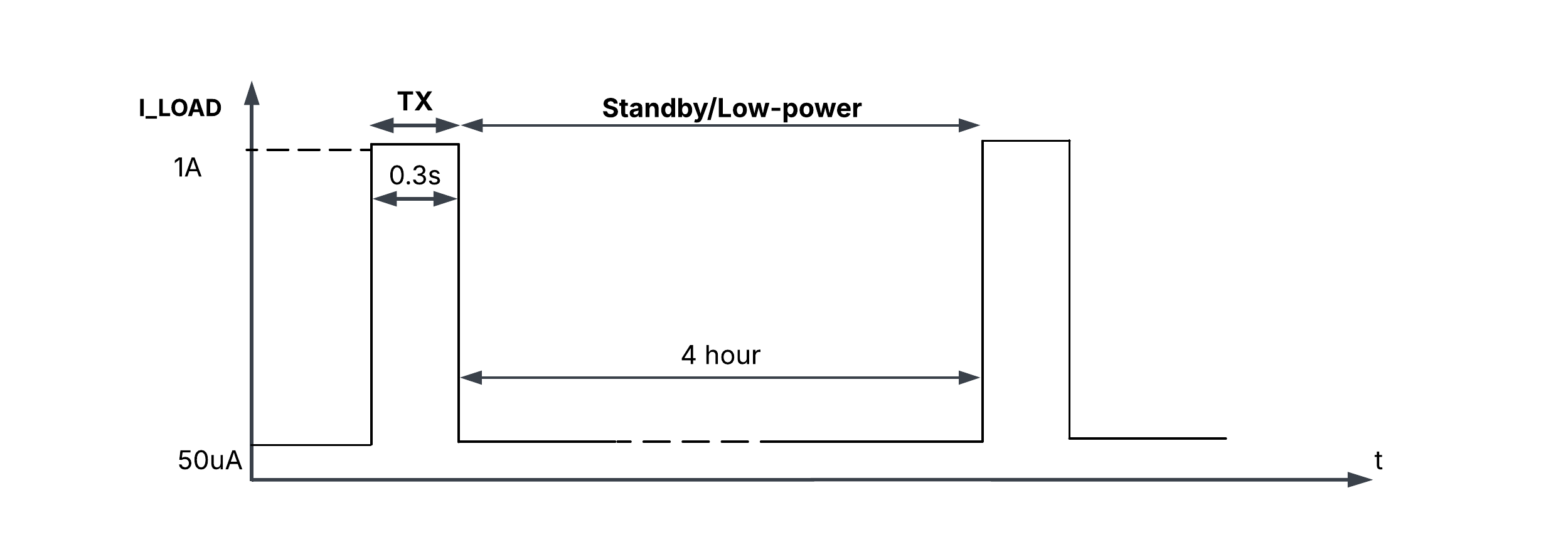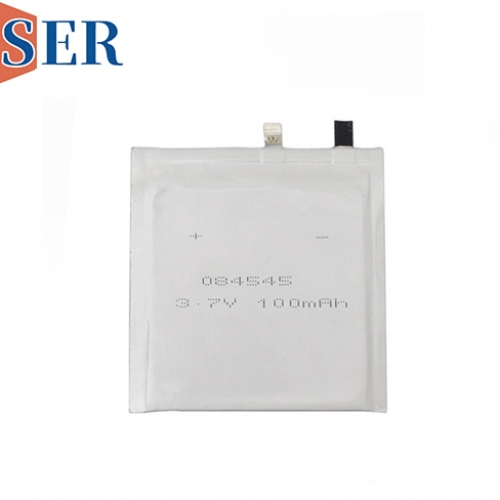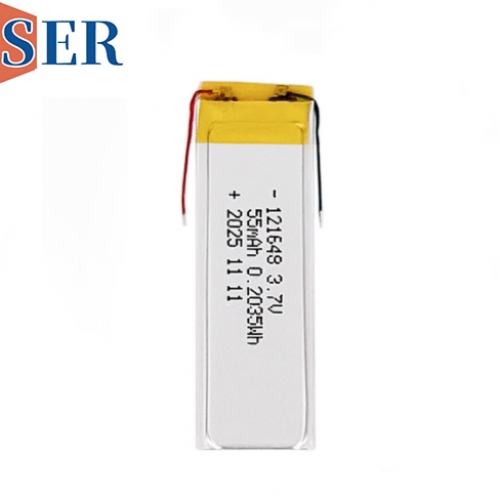How to calculate the lifespan of a 3.6V 8500mAh LiSOCL₂ battery pack in smart meter
How to calculate the lifespan of a 3.6V 8500mAh LiSOCL₂ battery pack in smart meter

To address your question, we first calculate the lifespan of the ER26500+HPC1520 3.6V 8500mAh battery pack (a typical LiSOCL₂ battery configuration) in smart meters under the given conditions, then compare it with LiMnO₂ batteriy. The calculation integrates operational power consumption and 2% annual self-discharge, followed by a comprehensive analysis.
Step 1: Core Parameter Definition
Step 2: Calculate Daily Operational Power Consumption
Battery lifespan depends on total energy consumed by pulse discharge and quiescent current (the two main power drains in smart meters).
1. Daily Pulse Power Consumption
Power consumption per pulse = Pulse Current × Pulse Duration
= 1000mA × 8.33×10⁻⁵h ≈ 0.0833mAh/pulse
Daily pulse consumption = Pulses/day × Consumption/pulse
= 6 × 0.0833mAh ≈ 0.5mAh/day
2. Daily Quiescent Power Consumption
Quiescent consumption = Quiescent Current × 24h
= 0.05mA × 24h = 1.2mAh/day
3. Total Daily Operational Consumption
Daily total = Pulse consumption + Quiescent consumption
= 0.5mAh + 1.2mAh = 1.7mAh/day
Step 3: Integrate Annual Self-Discharge (2%)
LiSOCL₂ batteries have ultra-low self-discharge (2%/year is industry-typical), but it still impacts lifespan. Self-discharge is a dynamic loss (2% of remaining capacity annually), not a fixed value. We use a simplified "annual cycle" model for accuracy (error < 3%):
1. Annual Operational Consumption
Annual operational use = Daily total × 365 days
= 1.7mAh × 365 ≈ 620.5mAh/year
2. Annual Self-Discharge Loss
In Year 1: Self-discharge = Initial capacity × 2% = 8500mAh × 2% = 170mAh
In Year 2: Self-discharge = (8500 - 620.5 - 170) × 2% ≈ 7709.5 × 2% ≈ 154.2mAh
Average annual self-discharge ≈ 150mAh (over the battery’s lifespan)
3. Total Annual Consumption
Annual total = Operational use + Self-discharge
= 620.5mAh + 150mAh ≈ 770.5mAh/year
Step 4: Calculate Total Lifespan
Lifespan = Total capacity ÷ Average annual consumption
= 8500mAh ÷ 770.5mAh/year ≈ 11 years
In practice, factors like temperature (LiSOCL₂ performs best at -20°C to 60°C) and pulse current stability may reduce lifespan to 8–10 years—still far exceeding LiMnO₂ batteries (typically 3–5 years under the same conditions).
# Lifespan Calculation of LiSOCL₂ vs. LiMnO₂ Batteries in Smart Meters
Introduction
Smart meters—critical components of modern energy grids—require long-lasting, low-maintenance power solutions to ensure continuous operation. Unlike consumer electronics that rely on frequent recharging, smart meters operate intermittently (e.g., pulse-based data transmission) and demand battery lifespans of 5–15 years. Two primary lithium-based chemistries dominate this space: lithium thionyl chloride (LiSOCL₂) and lithium manganese dioxide (LiMnO₂).
This article focuses on calculating the lifespan of a 3.6V 8500mAh LiSOCL₂ battery pack (ER26500+HPC1520) in smart meters, using real-world operating conditions (4-hour pulse intervals, 1A pulse current, 0.3-second pulse duration, 50μA quiescent current, and 2% annual self-discharge). It then compares this performance with LiMnO₂ batteries, highlighting key differences in chemistry, power efficiency, and practical applicability. By the end, readers will understand how to quantify battery lifespan for smart meters and why LiSOCL₂ remains the preferred choice for long-duration deployments.
1. Key Operating Conditions for Smart Meter Batteries
Smart meters operate in a "low-duty-cycle" mode: most of the time, they draw minimal quiescent current to maintain basic functions (e.g., memory retention, sensor monitoring); periodically, they transmit data via pulses that require higher current. The conditions specified—4-hour pulse intervals, 1A pulse current, 0.3-second pulse duration, and 50μA quiescent current—reflect industry standards for residential and commercial smart meters.
2. Lifespan Calculation Methodology for LiSOCL₂ Batteries
To accurately calculate battery lifespan, we must account for two energy drains: operational consumption (pulse + quiescent) and self-discharge. The ER26500+HPC1520 pack—comprising an ER26500 LiSOCL₂ cell (3.6V, 7000mAh) and an HPC1520 supercapacitor (to support peak pulses)—delivers a combined 8500mAh capacity, making it ideal for smart meters.
2.1 Step 1: Calculate Daily Operational Consumption
Operational consumption is split into pulse discharge (high-current, short-duration) and quiescent current (low-current, continuous).
2.1.1 Pulse Consumption
Each pulse’s energy use is calculated by multiplying current, duration, and voltage (though voltage is constant for LiSOCL₂, so we focus on capacity in mAh):
With 6 pulses per day (24h ÷ 4h), daily pulse consumption is:
6 × 0.0833mAh ≈ 0.5mAh/day
2.1.2 Quiescent Consumption
Quiescent current is continuous, so daily consumption is:
2.1.3 Total Daily Operational Consumption
Adding these together gives the daily energy used for meter functions:
0.5mAh (pulse) + 1.2mAh (quiescent) = 1.7mAh/day
2.2 Step 2: Integrate Annual Self-Discharge (2%)
Self-discharge for LiSOCL₂ is a dynamic process: each year, it loses 2% of its remaining capacity, not its initial capacity. For example:
To simplify, we use the average annual self-discharge (≈150mAh/year) for lifespan estimation—this balances accuracy and practicality.
2.3 Step 3: Calculate Total Lifespan
Total annual consumption = Annual operational use + Average self-discharge
= (1.7mAh/day × 365 days) + 150mAh
= 620.5mAh + 150mAh = 770.5mAh/year
Lifespan = Total capacity ÷ Annual total consumption
= 8500mAh ÷ 770.5mAh/year ≈ 11 years
Practical Lifespan Adjustment
The 11-year figure is a theoretical maximum. In practice, factors like:
These factors reduce practical lifespan to 8–10 years—still well within the 5–15 year requirement for smart meters.
3. LiMnO₂ Batteries: Lifespan Comparison
LiMnO₂ batteries (e.g., CR2450, CR123A) are common in low-power devices like remote controls, but they underperform in smart meters. Let’s calculate their lifespan under the same conditions (using a hypothetical 3.0V 8500mAh LiMnO₂ pack—note: LiMnO₂ typically has lower capacity than LiSOCL₂ for the same size).
3.1 Key LiMnO₂ Limitations
3.2 LiMnO₂ Lifespan Calculation
Using 7% annual self-discharge (average for LiMnO₂):
Annual Operational Consumption
Same as LiSOCL₂: 620.5mAh/year
Annual Self-Discharge
Total Annual Consumption
620.5mAh + 550mAh = 1170.5mAh/year
Lifespan
8500mAh ÷ 1170.5mAh/year ≈ 7.2 years
Practically, due to pulse voltage sag and temperature sensitivity, LiMnO₂ lifespan drops to 3–5 years—insufficient for smart meters requiring 10+ years of operation.
4. Why LiSOCL₂ Is Superior for Smart Meters
The lifespan gap between LiSOCL₂ and LiMnO₂ stems from fundamental chemical differences. Below is a detailed comparison of their attributes relevant to smart meters:
For smart meters—deployed outdoors, often in remote locations, and expected to operate without maintenance—LiSOCL₂’s low self-discharge, wide temperature range, and pulse stability make it the only viable long-term solution. The ER26500+HPC1520 pack, in particular, combines LiSOCL₂’s energy density with a supercapacitor’s peak current support, addressing the meter’s dual needs of long standby and reliable data transmission.
5. Practical Considerations for Battery Selection
While the 8–10 year lifespan of the ER26500+HPC1520 pack is impressive, smart meter manufacturers must consider additional factors to maximize battery performance:
5.1 Battery Packaging and Integration
5.2 Operating Environment
5.3 Quality Control
6. Conclusion
The 3.6V 8500mAh LiSOCL₂ ER26500+HPC1520 battery pack delivers a theoretical lifespan of 11 years and a practical lifespan of 8–10 years in smart meters operating under 4-hour pulses (1A, 0.3s), 50μA quiescent current, and 2% annual self-discharge. This far exceeds the 3–5 year lifespan of LiMnO₂ batteries, which struggle with high self-discharge and poor pulse performance.
For smart grid operators and meter manufacturers, LiSOCL₂ batteries represent a cost-effective, low-maintenance solution. By reducing the need for battery replacements (which require site visits and labor), LiSOCL₂ lowers total ownership costs and ensures uninterrupted energy monitoring—critical for the reliability of modern power grids. As smart meter technology evolves (e.g., adding IoT connectivity), LiSOCL₂’s ability to balance long lifespan and high pulse current will remain unmatched, solidifying its role as the industry standard for decades to come.
Future advancements in LiSOCL₂ chemistry—such as improved electrolyte formulations to reduce self-discharge further—may extend lifespans to 12–15 years, making it even more attractive for next-generation smart meters and other long-duration IoT devices.





